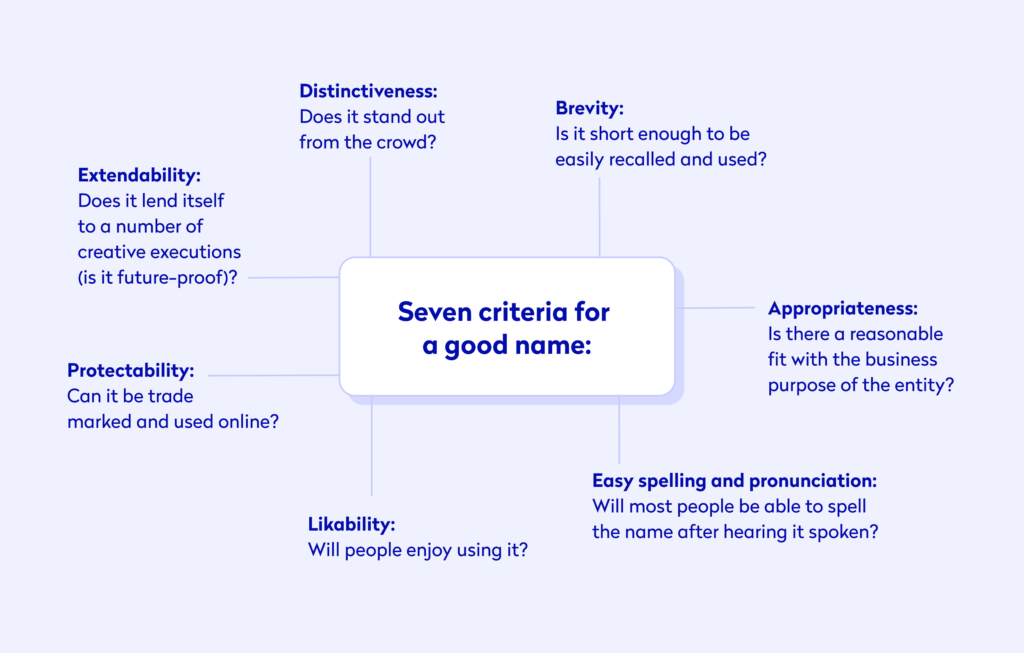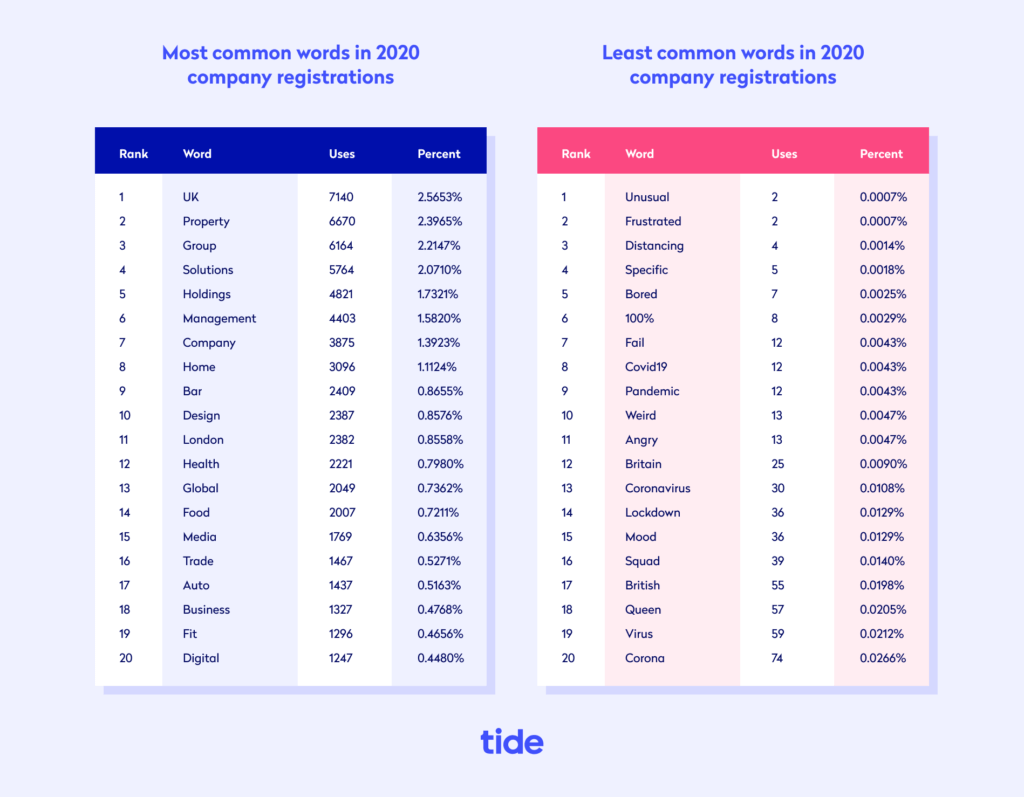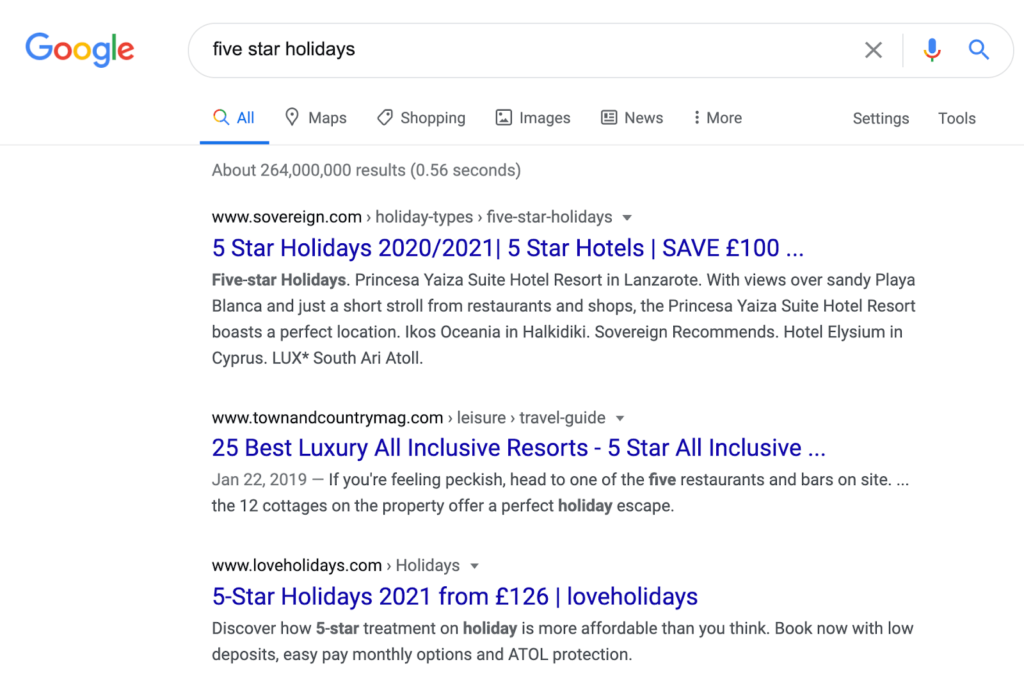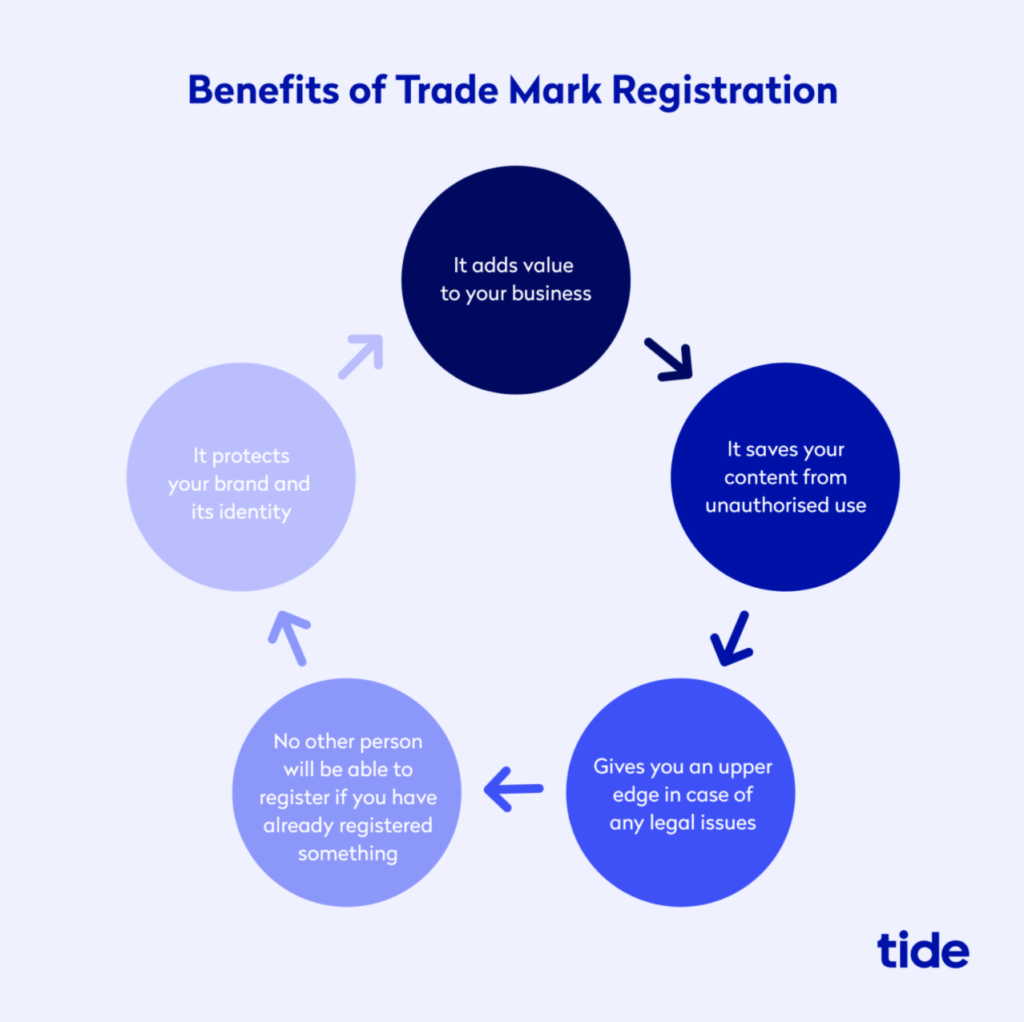
How to find the perfect name for your small business

Backed by good branding and a comprehensive go-to-market strategy, a business name can become the most memorable and recognisable part of your venture.
Why?
Because a unique name with a catchy look or sound piques interest. It makes people want to know more.
And ultimately, your brand name will create an emotional resonance with your customers, so it must indicate who you are and what you stand for in a way that aligns with your end goals.
In this post, we’re going to look at what makes a good business name and take you through the steps to come up with a name that defines your business and differentiates you from the crowd.
Top Tip: Choosing a name is just one of the many steps that helps you boost brand awareness and build a loyal audience as you bring your product or service to market. To learn more about what goes into creating consistent brand positioning across all areas of your new business, read our 7-step guide to building a brand that customers love 🔥
Table of contents
- What makes a good business name?
- How to come up with a business name
- Step 1. Start with your business fundamentals
- Step 2. Brainstorm ideas
- Step 3. Refine your list
- Step 4. Check that your name is available
- Step 5. Get feedback on your name
- Step 6. Register your company name
- Wrapping up
What makes a good business name?
Your business name is critical to your company’s identity. It’s what will help differentiate your business in your target market. And while it takes good products, services, marketing and experiences to give a name long-lasting value, the word or words you choose can create an immediate, if often subconscious, impression.
Top Tip: The more you know about the market you’re entering into, the better you’ll be able to come up with creative ways to stand out and differentiate yourself from the crowd. To get started, read our guide on how to conduct market research for your business idea 📌
Take a person’s name, like Dominic or Victoria, for example. You probably have an impression in your mind of what that person looks like, along with certain personality traits. These could be based on previous interactions or a particular thing you associate with that name. Our minds are always making subconscious connections and it’s no different with a business name.
A good business name should create the right first impression, painting a picture in the mind of the reader that links to what your business does.
To achieve that, your name should meet the seven criteria for a good name, first introduced by branding expert Marty Neumeier in his book, The Brand Gap, back in 2005.

Keep this list close to hand when you begin brainstorming possible name ideas.
The seven types of brand names
According to Want Branding CEO, Jonathan Bell, whose company has worked on brand naming for Google, Disney, Intel and Gillette among others, there are seven types of business names, which means your name will fall into one of the following seven categories:
- Eponymous. Based on the name of the company founder (i.e. Gregg’s or Ford).
- Descriptive. Based on what the company does and/or their location (i.e. British Airways or Pizza Hut).
- Acronymic. Using Letters in place of words (i.e. ASOS or H&M).
- Suggestive. Using words that suggest what the company does (ie.. Netflix or eBay).
- Associative. Using words that have positive associations (i.e. Amazon or Pampers).
- Non-English. Based on words in a foreign language (i.e. LEGO or Patagonia).
- Abstract. Based on catchy made-up words or the combination of two or more words to create a new word (i.e. Swatch [a constriction of ‘second watch’] or Kodak).
This list should throw up a few name ideas. Use it alongside the seven criteria when coming up with brand name ideas.
How to come up with a business name
Once you know what makes a good company name, the naming process is relatively straightforward. We’ve broken it down into six steps.
Step 1. Start with your business fundamentals
For your business name to have long term appeal, it needs to fit with your company values, mission, objectives and audience. Before you begin brainstorming business name ideas, have a clear view of:
- Why your business exists (what you stand for)
- Your products and services
- The competition
- Your target audience
- Your long-term plans
If you have a business plan, you’ll find all the answers you need there. If not, spend a bit of time getting the fundamentals down on paper.
Top Tip: If you need help, read our guide on how to create a business plan ⚡️
Step 2. Brainstorm ideas
Brainstorming is a creative free-for-all. There’s no such thing as a bad idea at this stage, so any word or phrase, however obscure or silly it may sound at first, is worth getting down on paper.
Idea generation thrives in collaboration too, so if you can, get several members of your team around a table (or on a video call as many people are working remotely due to COVID-19).
With the good name criteria, name types and your business fundamentals in mind, use your brainstorming session to create four lists. These can be mind maps, doodles, spider diagrams or classic ordered lists—whatever works best for you creatively.
1. Descriptive keywords
Write down keywords that describe your business. For example, if you were starting a courier service, words like ‘dispatch’, ‘delivery’, ‘express’, ‘speedy’, ‘rapid’ and ‘transport’ are all good starting points for a business name.
By writing down as many keywords as you can think of, you’ll be able to pick out the ones that reflect the brand image you want to create. To help bolster your list, use free tools like visuwords and Google Ads Keyword Planner.
Enter a keyword into the search field of either of these tools and you’ll be given a list of related terms.

Visuword is a visual thesaurus that’s designed to stimulate ideas and get the creative juices flowing. Google Ads Keyword Planner is similar, although there’s a more strategic element to it.
Google shows you words and phrases that people type into its search engine. The higher the average monthly search volume, the more people there are searching for these words. This gives you a good insight into which words people are using to look for small businesses like yours.
Including a popular keyword in your name could help you show up in more Google search results, but conversely also put you up against stiff competition, making it harder to stand out. On the other hand, including a word with a low search volume will mean showing up in fewer search results, but you’ll have a greater chance of standing out.
In the grand scheme of things, a name matters little to SEO performance (good SEO is built on a well-executed marketing strategy and sound website architecture) but search terms are certainly worth keeping in mind.
2. Competitor and idol names
Write down the names of your competitors, as well as any businesses that you like for their name. Now break these names down one by one and write notes on:
- Why you like/dislike the name. Is it because it’s fun, clever or informative? Or is it bland, corporate and boring?
- Why the name does/doesn’t name work. Does it create the right impression? Does it describe what the company does? Is a business’ success helped by its name or is it successful despite it?
Look for trends in names too. Do certain words keep appearing? Are they positive or negative? We recently analysed 278,325 companies formed from 1 January 31 May 2020 to identify the most and least common words used by businesses. Compare these words with the names of your competitors and idols to identify words to save and avoid.

Try to pick out the qualities of the great names so that you can apply them to your own ideas. Then, identify why certain ones don’t resonate so you can avoid similarities.
3. Wordplay names
Come up with clever and quirky names for your business. These can be made-up words, random words from a dictionary or favourite novel, acronyms, misspelt words or combinations of words. Think along the lines of those businesses with abstract and associative names.
A lot of great business names come from seemingly meaningless words. For example, Häagen-Dazs is a name that conveys tradition and craftsmanship, but it’s completely made up.
Pinterest is a combination of “pin” and “interest”. Lyft swapped the “i” for a “y” in “lift” to create a new word for its ridesharing company. And “Apple” associates its brand with the simplicity of the fruit.
Anything goes with this list, so have fun throwing different words together.
4. Name generator list
Take the words you’ve come up with and put them into a name generator like Shopify’s business name generator or BrandBucket.

Write down any names that stand out. A lot won’t, but often there’s something in the randomness of name generators that create a spark of inspiration.
Once you have your four lists, take a break. Leave your names to stew for 24 hours so that you can approach the next step with fresh eyes and an open mind.
Finding inspiration
If you’re struggling to come up with ideas for names to add to your list, try entering words into any of the following resources to see what comes up:
Step 3. Refine your list
Now it’s time to separate the wheat from the chaff and turn four lists of potential business names into one refined shortlist.
Start by highlighting all the names that stuck out to you at first and any that you thought about when you stepped away. Then, cross out any names that you immediately dislike, but leave the ones you’re undecided on. This should quickly help cut your list in half.
From the names you’re left with, think about what they tell your audience:
- Does the name create the right first impression?
- Does it paint a picture in the mind of the reader that links to your product or service?
- Does it fit with your business mission and values?
- Does it sound good when said aloud?
- Will it still be relevant in 5-10 years when your business has grown and evolved?
If the answer to any of those questions is no, cross the name out. Keep going back through the list until you’re left with a shortlist of around 10-12 names.
Now, step away again. Sleep on it and come back to the list with renewed focus. Does every name on the list belong there? Would you be happy with a name from this list as the lifelong name of your business?
For example, Amazon started as an online bookstore and grew into the biggest retailer in the world selling everything from food to clothing. That growth may not have been possible had they opted for a business name based around the word “books”.
By the end of the process, you should have around 6-8 names you’d be happy to have as a business name. One or two of these might stand out as preferred options, but as we’ll explain shortly, it’s best to have a handful to choose from.
If you look at your shortlist and aren’t seeing names that resonate with you, take what you have and go back to the drawing board. Choosing a name is one of the biggest decisions you’ll make as a business owner, so keep on repeating the brainstorming process if you need to.
Once you have your list, create a table with eight columns. We’ve created a potential business names spreadsheet for you to make this process quick and easy.

If you choose to make one yourself, title the first column ‘names’ and list your names down the page. For the remaining seven columns, title each with one of the seven good name criteria:
- Distinctiveness
- Brevity
- Appropriateness
- Easy spelling and punctuation
- Likability
- Extendability
- Protectability
Go back through your list and put a tick in the box if the name meets the first six criteria. Don’t worry about protectability just yet, you can check for that shortly. If any name falls short, cross it out.
Step 4. Check that your name is available
Now that you have your final shortlist, it’s time to make sure they meet the protectability aspect of the good name criteria.
With 6.0 million private sector businesses in the UK alone, there are no guarantees that the name you have in mind is available to use for your business, which is why we recommend having more than one name you’d be happy to run with.
Before finalising your name, check to see that no other business is using it by searching:
- Registered trade marks
- Domain name availability
- Social media handles
Search Google
Searching Google for your business name and intended URL is the quickest way to see if a company with the same name exists. It will also show results for businesses with similar names so that you can avoid potential clashes or legal issues.
If no other business matching your name shows up on the first page, be sure to look at several pages of results. It could be that a business name is also a competitive search term and the business is pushed down the rankings by more established brands. For example, search results for the name ‘Five Star Holidays’ are dominated by big travel websites offering five-star holiday packages.
Top Tip: Check your company name for FREE! Bulk check up to 8 names at once and check company name availability with our free search tool 🔍

Try varying your search terms by removing spaces or changing spellings too. For example, “fivestarholidays” or “5starhols”. Different variations on your name will return different results.
Searching registered trade marks
If another company has trade marked the name that you’re using, you risk legal action against your business, which could force you to change to a different name and rebrand your entire business.
For example, in 2019 Bentley Motors lost a trade mark battle with clothing company Bentley Clothing over the use of the Bentley name, meaning the car manufacturer’s range of bags, hats, purses and wallets can no longer feature its brand name.

You can easily check if a similar trade mark to your business name already exists by entering your name into GOV.UK’s trade mark search tool.
If your name is available to trade mark, you’re able to register it for use in the UK. A registered trade mark is valid for 10 years and needs to be renewed after that period is up.
You’ll also need to actively use the trade mark to avoid losing it, so don’t register a name unless you plan to use it. Also, if you plan on doing business internationally, you may have to register for international trade mark protection to avoid potential conflict abroad.
Top Tip: Trade marking your name falls into the category of intellectual property. Other types of intellectual property are copyright, patents, trade secrets and designs. You should familiarise yourself with everything that you may need to register to protect to ensure nobody steals or copies your hard work or brilliant idea. To learn more, read our guide on how to protect a business idea and secure your intellectual property 🔐
Searching domain availability
If you plan on running or promoting your business online, you’ll need to check that the domain for your business name is available. You can do this by searching the database of a domain registrar like GoDaddy or 123Reg.

If your name is unavailable, you have three options:
- Opt for another name on your shortlist
- Get creative with abbreviations, dashes or extra letters
- Choose an alternate top-level domain
In the above search for ‘dispatch rider’, GoDaddy offers some alternate suggestions such as ‘dispatchriders’ and ‘dispatch-rider’. It also suggests other domains, such as ‘.info’, ‘.co’ and ‘.world’ (but be careful not to fall into the ‘Same as’ names violation that we will discuss in detail below).
As ‘.com’ is the most popular and memorable top-level domain, moving away from can make your URL harder to remember. Therefore, a tweak of your name may be the best solution. That said, if your business is for a UK audience, ‘.co.uk’ is familiar to most people and the go-to after the ‘.com’ domain.
The sheer number of available domains means that two or more similar names can exist, which can be damaging to your brand. For this reason, a lot of ecommerce businesses choose to purchase several URLs (for example, dispatchrider.com, dispatchrider.net and dispactchrider.co.uk) and point them all at their website.
If your business name is available, it’s worth purchasing as soon as possible. According to Verisign, there were 370.7 million domain registrations in the third quarter of 2020 alone so there’s no telling how long your domain will remain available.
Searching for social media handles
Social media has become a crucial part of how consumers interact with businesses.
Not only does half of the world now use social media, but many people go on social platforms to learn more about businesses and the products or services they want to buy.
Having a presence on major platforms like Facebook, Twitter, LinkedIn and Instagram will be important for marketing your brand, engaging with your followers and providing customer service.
You can check to see if social media handles are available by typing your business name into the search field of a particular platform or by searching your chosen business name + the social media site (i.e. ‘dispatch rider Twitter’) in Google.
As with the domain name search, if your chosen handle isn’t available, you’ll need to get creative with name tweaks, for example, “@RealDispatchRider” or “@TheDispatchRider” or “@DispatchRiderUK”.
Go back to your table and tick the box under protectability for every name that is available to use and protect.
Top Tip: With the right social media marketing strategy for your small business, you can attract new leads, engage more meaningfully with existing customers and expand your brand’s visibility. To learn more about how to post on the right channels at the right times, read our 7-step guide to creating a social media marketing strategy for your small business📱
Step 5. Get feedback on your names
At this point, only you and your team have seen the names on your shortlist and you’re coming at them from a place of personal preference. Getting feedback from people outside your team will give you a flavour of how the public perceives your names.
For a good spread of opinions, you should aim to get feedback from around 20 people from the following groups:
- Stakeholders
- Friends and family
- Potential clients or customers
- Strangers
Rather than asking participants to give feedback in groups, approach each person individually. This way you can avoid feedback being swayed by the most dominant voices in a group.
Ask participants:
- To pronounce your name after seeing it written down (a name that’s easy to say will make it easier for you to propel your brand into the public conscience through conversation)
- What they think of when they see or say the name. What do they think your company does?
- What they like and dislike about the name
The feedback you get from participants will throw up talking points that may help narrow down your shortlist further. You’ll also gain insight that can be used to build the right messaging to educate and engage your audience when your business launches.
But remember, a brand is more than a name. With sufficient time, marketing and advertising, any name can be given correct meaning. Think of Nike, for example, which is named after the Greek goddess of Victory. Someone hearing the name Nike for the first time wouldn’t automatically associate it with sportswear. Yet over time, the company has built its brand to the point where sportswear is the first thing we think of when hearing the name.
Use feedback to guide you on your name choice, rather than making it the basis of your final decision.
Step 6. Register your company name
Once you’ve settled on a name (or two), you can make it official by registering your business with Tide.
But don’t throw away your list just yet.
The rules around registering your name depend on whether you’re setting up as a sole trader or partnership, or a limited company.
- Sole traders and partnerships aren’t required to register their business name but can use it to trade under
- Limited companies do have to register their name
However, the government also has its own rules on naming that may impact your chosen name. If your name meets the seven criteria and you’ve carried out your checks on availability, there’s a good chance your name can be registered.
But not every business name that’s registered is trade marked and not every business has an online presence, so you should be aware of the rules. Companies House states that business names should avoid:
- ‘Same as’ names (as mentioned above) where the only difference to an existing name is certain punctuation, certain special characters (i.e. the ‘plus’ sign), a word or character that’s similar in appearance or meaning to another from an existing name, or a word or character commonly used in UK company names.
- ‘Too like’ names where the name is too similar to another that already exists. To use Companies House’s example, ‘Easy Electrics For You Ltd’ is the same as ‘EZ Electrix 4U Ltd’.
- Names with sensitive words or expressions, or words that suggest a connection with government or local authorities, unless you have permission.
- Trading names with the words ‘limited’, ‘Ltd’, ‘limited liability partnership’, ‘LLP’, ‘public limited company’, or ‘plc’.
Companies House will contact you if your name is already in use or in breach of the rules and provide instructions on what to do.
As registering your business name is done in tandem with registering your company with HMRC and Companies House, you’ll need to think about your company structure and how you plan to trade.
Top Tip: To help you understand structures, the registration process and the costs involved, take a look at our guide on how to register a business in the UK ✅
If you choose to proceed with the limited company structure, register your business for free with Tide. We’ll pay the £12 incorporation fee for you. You’ll also get a free business bank account so you can manage your business finances more efficiently.
Wrapping up
Coming up with a great business name is a creative process. And as with any creative pursuit, striking gold can take hours, days, or even weeks. Take as much time as you need. If you’re not satisfied with the first round of brainstorming, repeat the process.
Remember, your business name will paint a picture in the mind of customers about who you are, what you do and how you do it. You want that first impression to be an engaging one. This is done with a name that not only meets the good name criteria, but is rooted in the fundamentals of your business.
Use the tools, tips and resources we’ve included in this post and seek creative input from other members of your team, or people in your social circles if you’re working alone, to come up with names you’re truly happy with. Then follow the steps to make that name official.
Once your name is set in stone, you can begin to develop your brand around it, reinforcing its meaning and making it synonymous with your business mission and values.
Photo by You X Ventures, published on Unsplash









